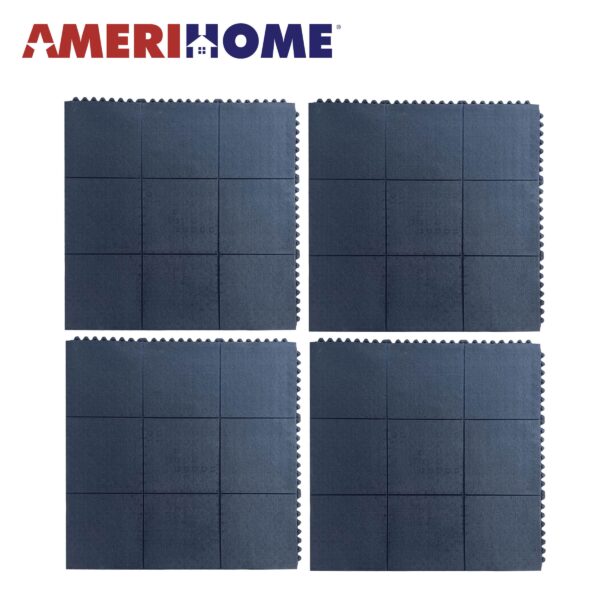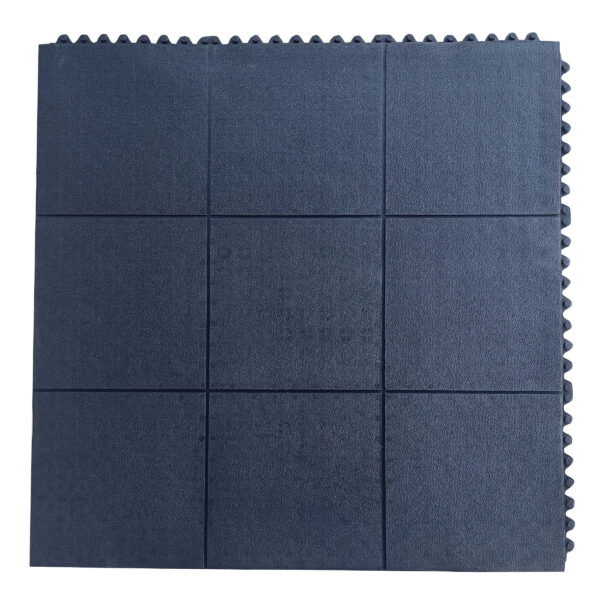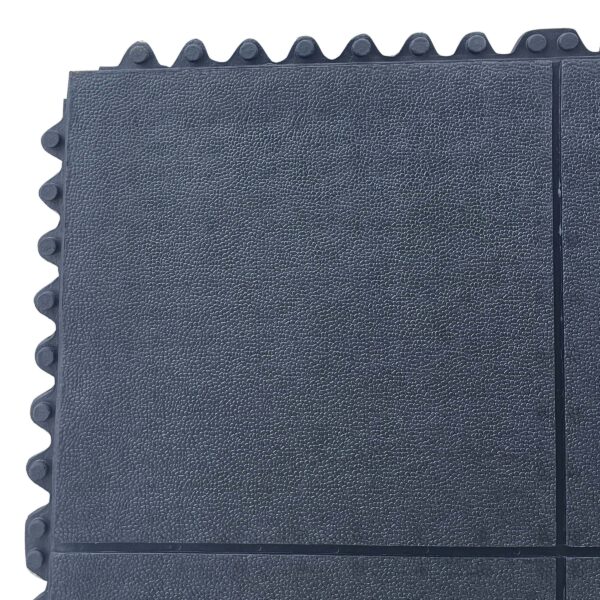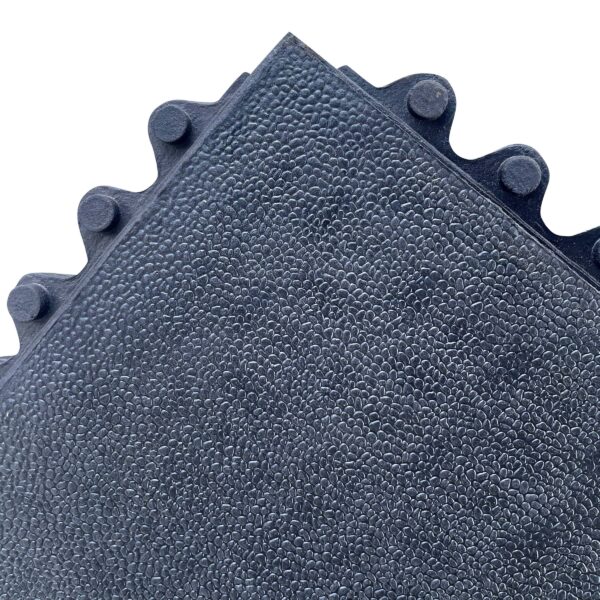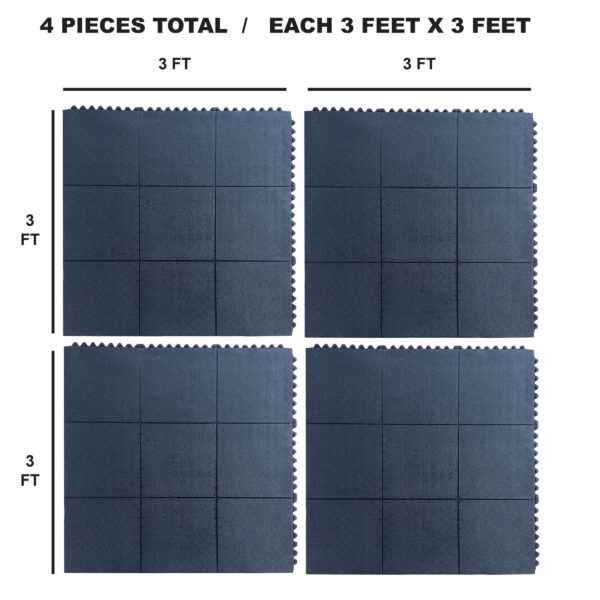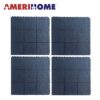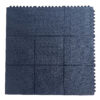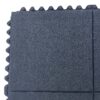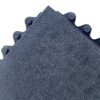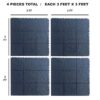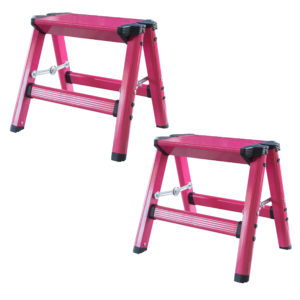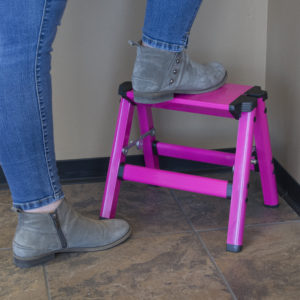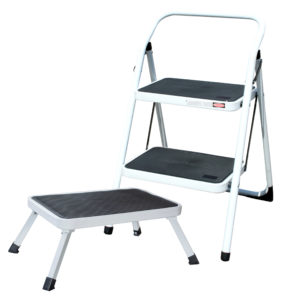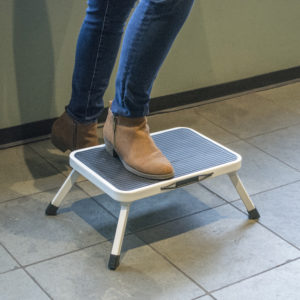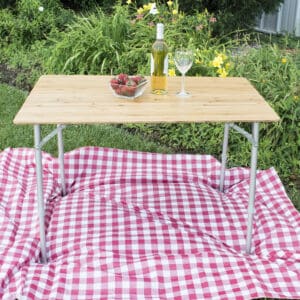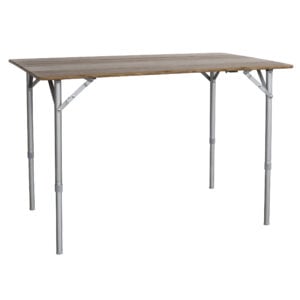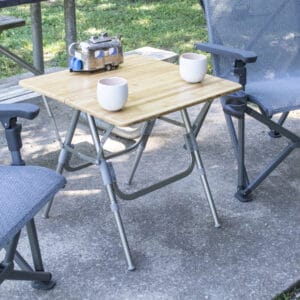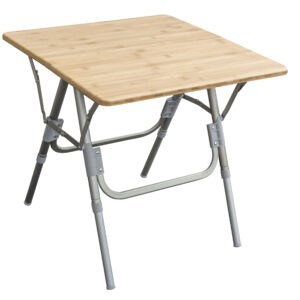Your cart is currently empty!
Set of 4 Pieces 3′ x 3′ Interlocking Rubber Tile Mat – AmeriHome
• 3′ x 3′ Interlocking Tile Mat
• Solid Mat – No Drainage Holes
• 4 Piece Set
• 36″ x 36″ x 5/8″ Solid Interlocking Mat
• Material: Rubber
• Each Tile Covers 9 sq. ft.
• Each Set Covers 36 sq. ft.
Item # RMTS33i4PK
200 in stock
-
Description
The AmeriHome 3′ x 3′ Interlocking Rubber Tile Mat Set of 4 is a durable and versatile flooring option that can be used in a variety of settings, such as gyms, workshops, playrooms, and more. Each Interlocking Rubber Tile Mat covers 9 square feet, providing ample coverage for larger spaces.
The interlocking design of these mats makes them easy to install and secure, as each tile can be easily connected to the adjacent tile using the interlocking edges. The rubber material of the mat provides a solid and sturdy base that can withstand heavy foot traffic, equipment, and other types of wear and tear.
Item # RMTS33I4PK
- Choosing a Rubber Mat for my home or warehouse involves considering several factors to ensure it meets my needs. To begin with, here are some key considerations:
- Purpose and Application:
- First, I identify the specific use of the mat. Is it for the home, a commercial warehouse, or an industrial setting? Different settings may require different types of mats.
- Material:
- Rubber mats come in various materials, including natural rubber, synthetic rubber, and recycled rubber. Consider the material’s durability, resistance to chemicals, and ability to withstand heavy loads.
- Thickness:
- The thickness of the mat is crucial, especially in industrial or warehouse settings. Compared to thinner mats, thicker mats provide better cushioning and durability. Without a doubt, this is essential for areas with heavy foot traffic or equipment.
- Surface Texture:
- The surface texture of the mat affects its slip resistance. For areas prone to spills or moisture, choose a mat with a textured surface to enhance traction and reduce the risk of slips and falls. Sooner or later
- Size and Shape:
- Measure the area where you intend to place the mat. Ensure that the mat’s size and shape match the space requirements. In fact, some mats come in interlocking pieces, allowing you to customize the size according to your needs.
- Resistance to Chemicals and Oils:
- If the mat will be exposed to chemicals or oils, I choose a mat with resistance to these substances. To put it another way, industrial or automotive areas where spills may occur may require extra durable protection.
- Ease of Cleaning:
- Another key point I consider is how easy it is to clean and maintain the mat. For instance, mats in high-traffic areas may require frequent cleaning. As long as they are easy to wipe down, I can clean with common cleaning agents.
- Anti-Fatigue Properties:
- In places where people stand for extended periods, like a warehouse or workshop, I consider using mats with anti-fatigue properties. In this example, mats provide cushioning to reduce stress on joints and muscles.
- Weight Capacity:
- For industrial or warehouse use, I check the weight capacity of the mat. For example, I ensure it can withstand the weight of heavy equipment or machinery without deforming.
- Budget:
- Finally, I set a budget for the mat. Prices can vary based on material, thickness, and features. Of course, I balance my requirements with my budget to find the best value for my needs.
- Purpose and Application:
- Choosing a Rubber Mat for my home or warehouse involves considering several factors to ensure it meets my needs. To begin with, here are some key considerations:
